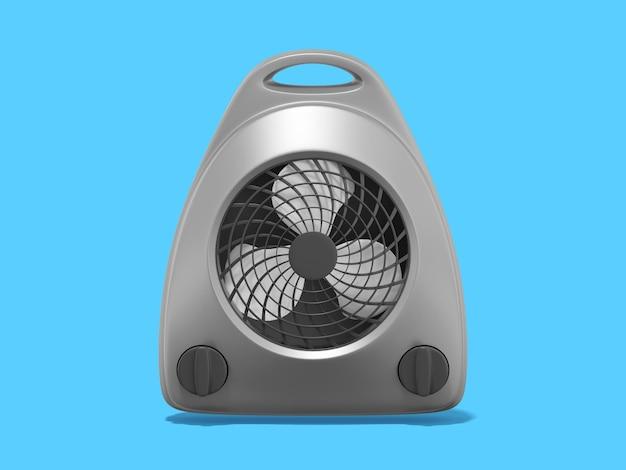Convection is a fascinating process that plays a crucial role in heat transfer. Whether you realize it or not, you encounter convection daily – from feeling the warmth of a cup of coffee to experiencing the cool breeze on a hot summer day. But did you know that there are different types of convection?
In this blog post, we’ll explore the difference between forced and free convection. We’ll delve into the three major processes of heat transfer and how they affect the temperature of our Earth. Additionally, we’ll take a brief look at the impact of convection on the surface of the sun. So grab a cup of coffee (or your preferred beverage) and get ready to dive into the world of convection!

What is the Difference Between Forced and Free Convection?
Understanding the Airflow Game
When it comes to convection, there are two players on the field: forced convection and free convection. Just like in a game of football, they both have their unique strategies and approaches, but it’s their differences that truly make the game interesting. So, let’s dive into the world of convection and explore the disparities between these two contenders.
Forced Convection: The MVP of Air Movement
If you think of forced convection as the MVP (Most Valuable Player) of airflow, you’re on the right track. This phenomenon occurs when external factors like fans or pumps forcefully propel air or any fluid across a surface. It’s like having a squad of cheerleaders cheering on the air molecules, giving them the extra motivation to move swiftly in a designated direction.
In forced convection, you’re in control. You can dictate the pace, trajectory, and even dance moves of the air particles. It’s like being the director of a grand symphony, orchestrating a harmonious flow. This kind of convection is often seen in forced-air heating systems, where warm air is blown into spaces, creating a cozy and toasty atmosphere.
Free Convection: The Easy Breezy Player
Now, if you’re more into the laid-back, easy-going style of play, free convection is the player for you. Unlike forced convection, free convection doesn’t require any external assistance or cheerleaders. It’s the player that goes with the flow, quite literally. Free convection takes place when the movement of air or fluid is solely driven by natural factors, such as temperature differences and buoyancy.
Picture yourself at a beach volleyball game. The air molecules are the beach balls, bouncing around freely in the atmosphere. As the sun heats the sand, the air molecules near the surface warm up and start dancing. They rise above the cooler air, creating a mesmerizing thermal ballet. This is free convection at its finest. It can be found in everyday scenarios like the rising plumes of steam from your morning coffee or the gentle breeze that caresses your cheek on a warm summer’s day.
What Makes Them Different
The main distinction between forced convection and free convection lies in their driving factors. Forced convection relies on external influences, such as mechanical devices or human intervention, to push the air or fluid in a specific direction. On the other hand, free convection is all about the natural movement driven by temperature variations and density differences.
Another point of divergence is the degree of control. With forced convection, you have the power to manipulate and fine-tune the airflow, just like a coach strategizing their team’s plays. Free convection, however, is a bit of a free spirit. It follows its own rhythm and dances to the tune of nature, making it harder to predict or control.
Forced convection and free convection take the stage in the grand performance of airflow. Like two players with differing styles, they bring their unique strategies and characteristics to the game. Forced convection relies on external forces and allows for precise control, while free convection moves with the flow of nature. So whether you prefer the hustle and bustle of forced convection or the laid-back elegance of free convection, remember that each has its own role in shaping the world of air movement.

FAQ: Understanding Forced and Free Convection
What are the Three Processes of Heat Transfer
Heat transfer, a fundamental concept in thermodynamics, is the movement of thermal energy from one object or place to another. There are three primary modes of heat transfer:
-
Conduction: This process occurs when heat flows through a solid material or between two surfaces in contact. Picture it like a game of hot potato, except the potato is the heat energy, and the players are particles vibrating and passing it along.
-
Convection: Convection takes place when heat is transferred through the movement of a fluid (liquid or gas). Think of it as a giant thermal dance party where energetic particles bump into their sluggish neighbors and pass the heat energy around.
-
Radiation: Unlike the other two processes, radiation can travel through empty space. It’s like heat taking a solo journey, carrying energy in the form of electromagnetic waves. You could say radiation is the rockstar of heat transfer!
Now that we’ve established these processes, let’s dive into the differences between forced and free convection!
What is the Difference Between Forced and Free Convection
Ah, the age-old question—forced or free? When it comes to convection, the difference lies in the “movers and shakers” responsible for the heat transfer:
Forced Convection: Imagine a determined individual using a hairdryer pointed at your face, hoping to dry your tears (or excessively sweaty forehead). Forced convection occurs when an external force, like a fan or pump, influences the movement of the fluid, enhancing heat transfer.
Free Convection: Think of this as a casual conversation of heat transfer between particles. Free convection happens naturally, driven solely by temperature differences within the fluid. When one area of the fluid heats up, its particles become more energetic, expanding and becoming less dense. These buoyant particles rise while cooler, denser particles take their place, generating a continuous circulation or convection current.
Put simply, forced convection is like getting a gentle push in the direction of heat transfer, while free convection is all about going with the flow.
How do the Three Major Processes of Heat Transfer Affect the Temperature of the Earth
Ah, the magnificent Earth—our cozy blue planet. The three processes of heat transfer play integral roles in regulating its temperature:
Conduction: Earth’s surface receives heat from the sun mainly through radiation. This solar energy heats up the ground, which then conducts the heat downwards. So, conduction helps bring warmth deep into the Earth, just like cozying up with a warm blanket.
Convection: Picture the atmosphere flexing its convection muscles. The sun’s rays heat the air near the surface, making it less dense and causing it to rise. As this heated air rises, cooler air rushes in to replace it, creating air currents. These convection currents disperse the heat throughout the atmosphere and ultimately help regulate Earth’s temperature.
Radiation: The mighty sun showers the Earth with radiant love in the form of electromagnetic waves. The Earth absorbs some of this radiation, warming its surface. In turn, the Earth radiates some of this heat energy back into space, ensuring a delicate balance between warmth and cosmic coolness.
So, these heat transfer processes ensure that Earth enjoys a comfortable temperature range, allowing life to thrive in all its splendid diversity.
What Impact Does Convection Have on the Surface of the Sun
Ah, the scorching ball of fire in the sky—the Sun! With convection being a hot topic, let’s see how it sizzles on the Sun’s surface:
The Sun’s outer layer, the photosphere, experiences vigorous convection. Meet the solar granules, tiny convection cells where hot plasma rises, cools at the surface, and sinks back down. These dancing granules resemble the crème brûlée of the cosmos, if you will.
Within the photosphere, intense heat moves through a combination of radiation and convection. The upwelling plumes, or bright granules, represent rising hot material, while the darker areas, called intergranular lanes, signify the sinking cool material.
These roiling convection cells and the associated magnetic fields also give rise to mesmerizing solar phenomena, like sunspots and solar prominences. So, convection not only keeps the Sun’s surface lively but also provides captivating spectacles for us Earthlings to admire.
That concludes our FAQ journey through the realms of forced and free convection. Stay curious, keep learning, and appreciate the remarkable dance of heat transfer happening all around us!
